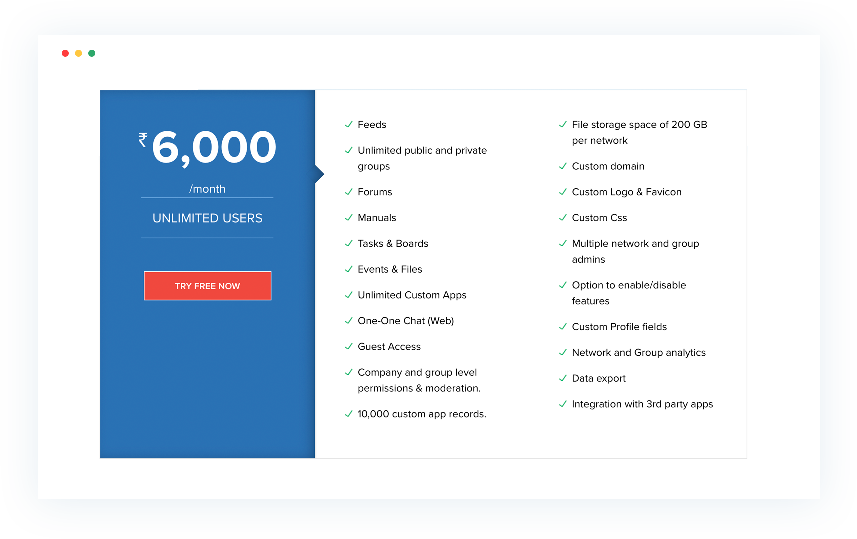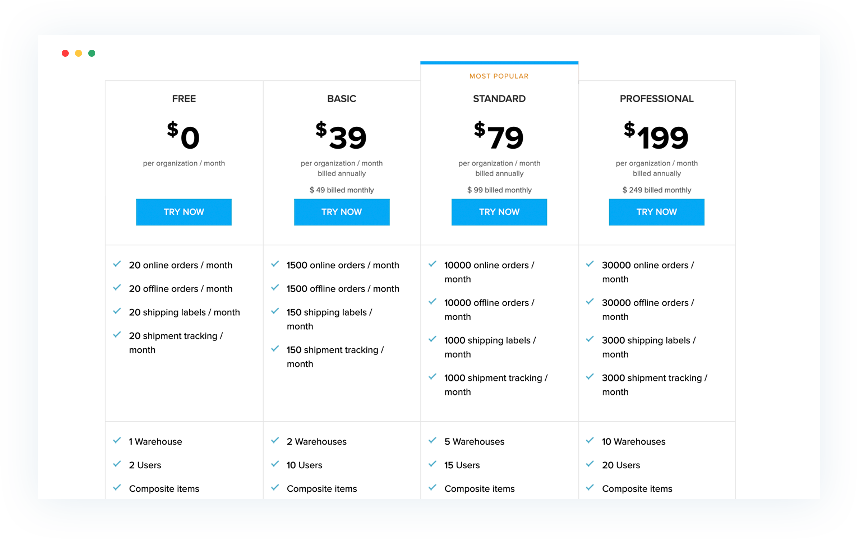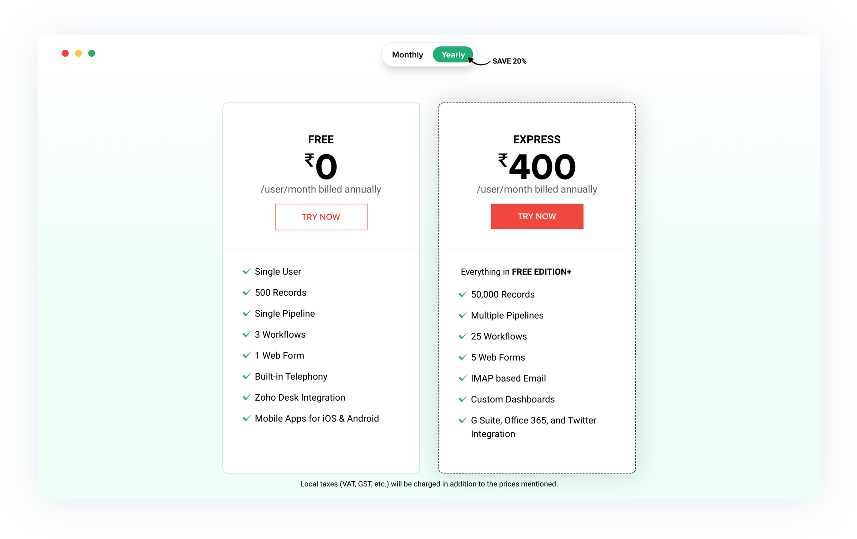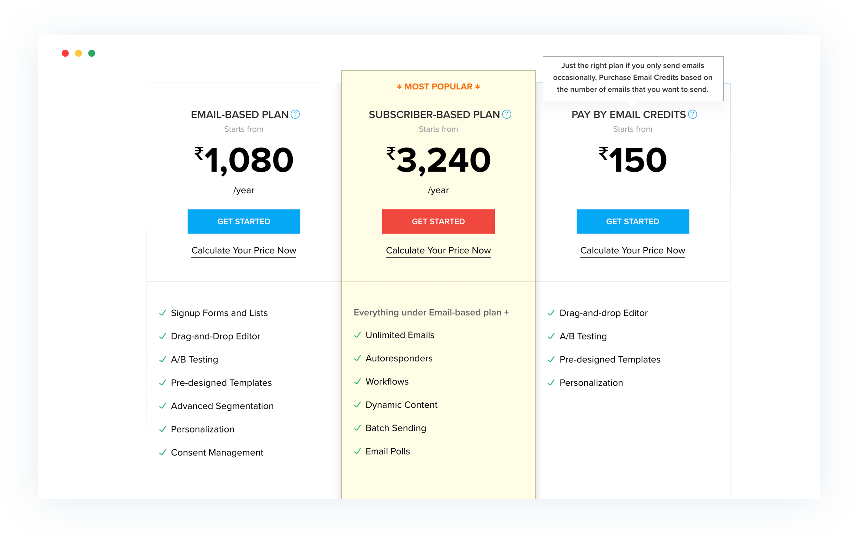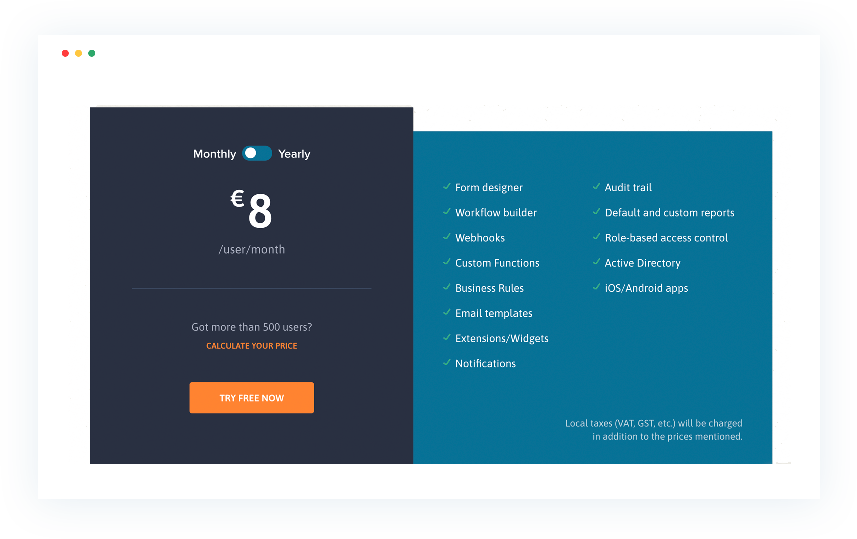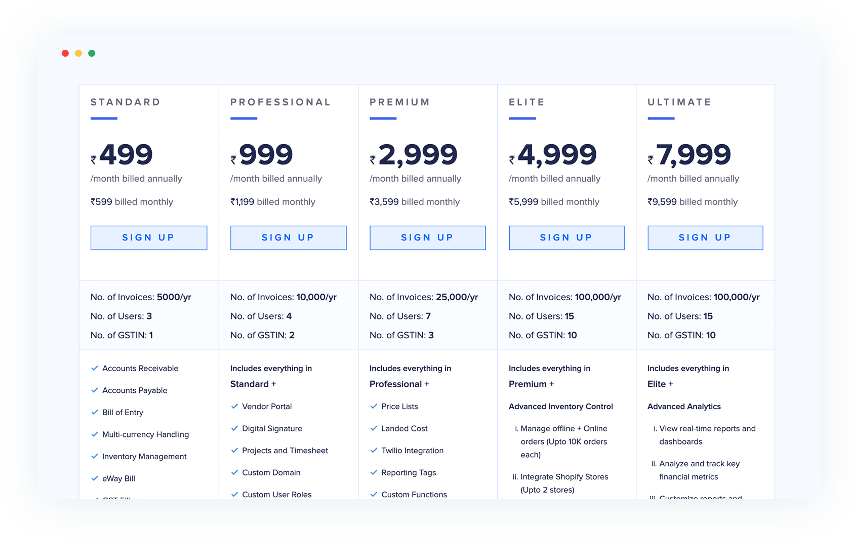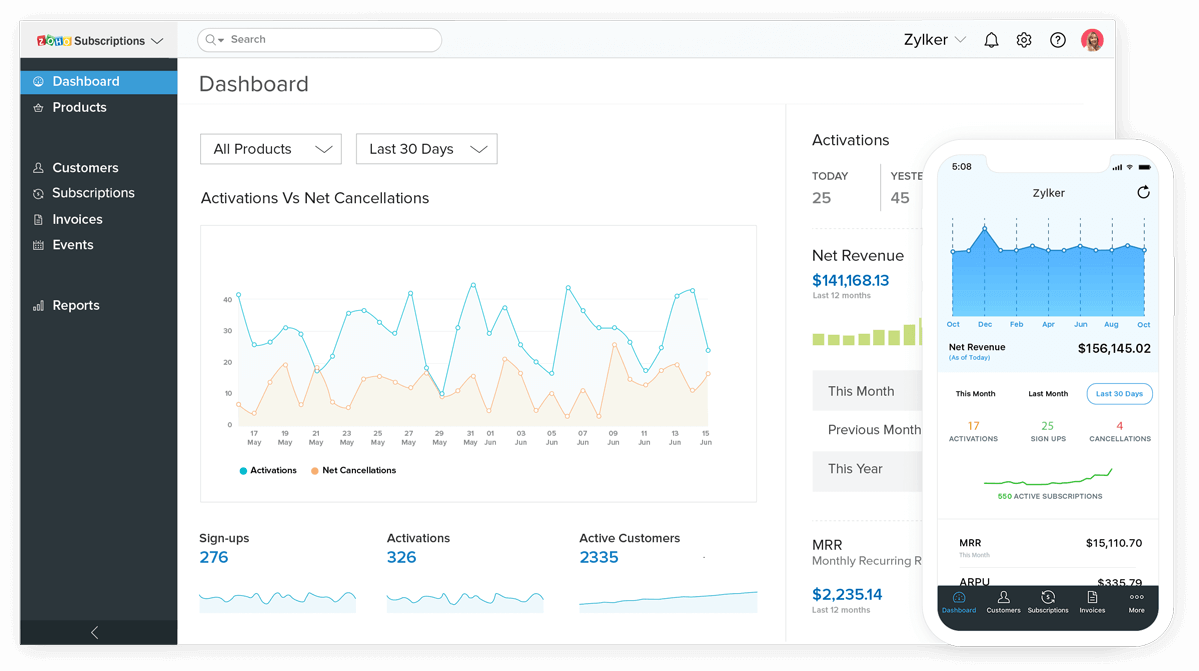Flat rate model
In this model, there is only a single plan which offers all the features and benefits for a single price. It is one of the simplest models available.
Up-front pricing
Potential customers know the price they're going to pay.
Ensures transparency
By laying out all the pricing factors, customers are sure of what they are getting into.
Easy to predict revenue
No matter the customer's circumstances, you know how much money you are going to make.
Lack of choices
With just one plan, customers might be left wanting more choices.
All or nothing
Some customers might not want the whole package you’re offering.
